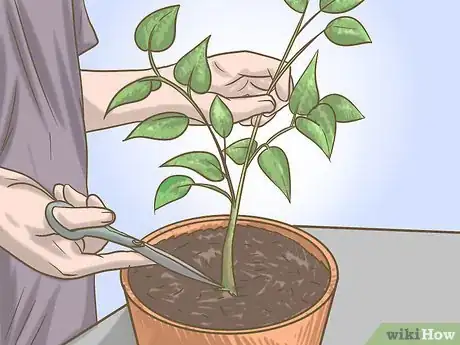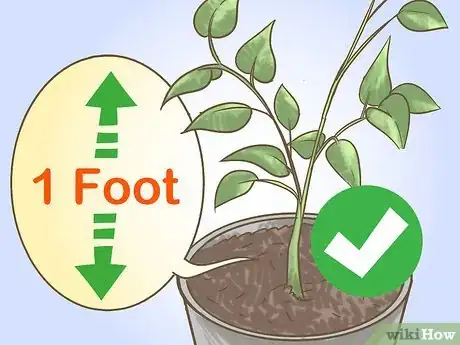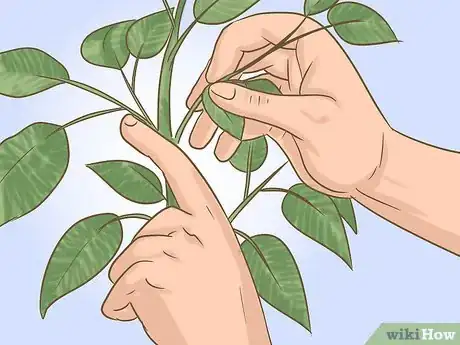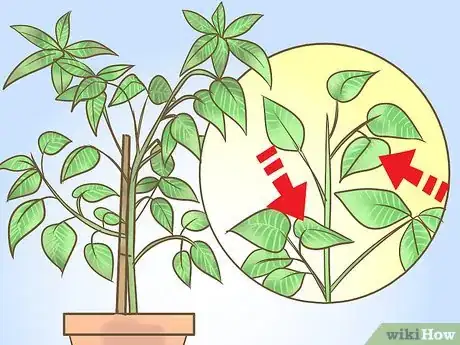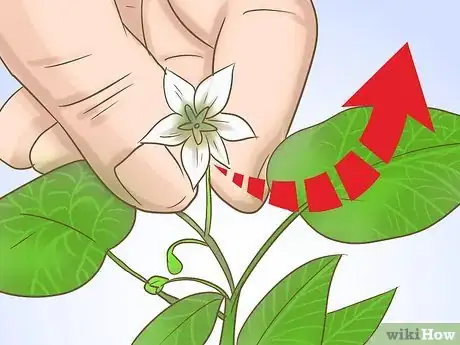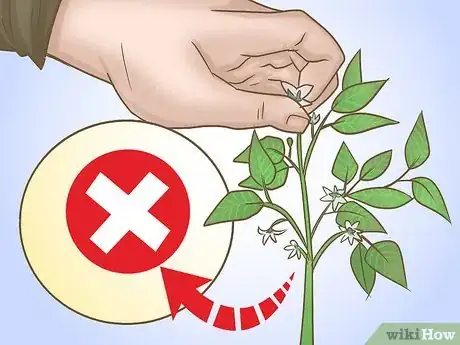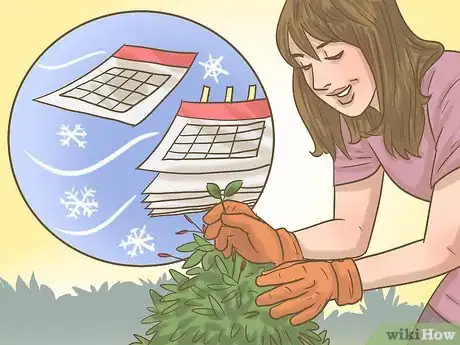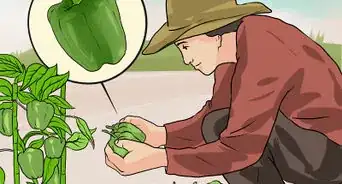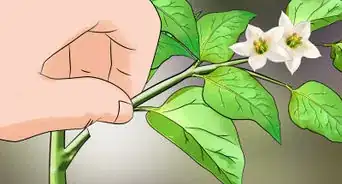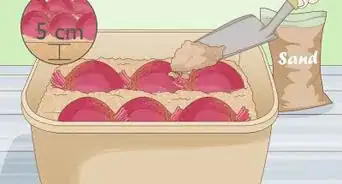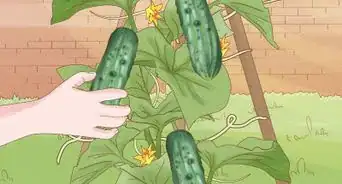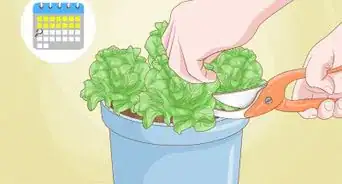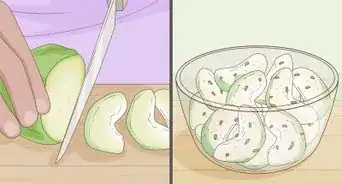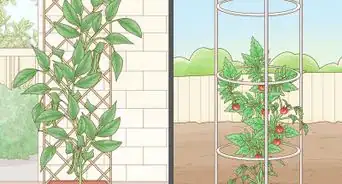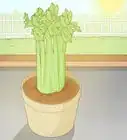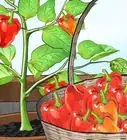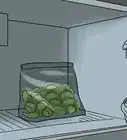This article was co-authored by Steve Masley. Steve Masley has been designing and maintaining organic vegetable gardens in the San Francisco Bay Area for over 30 years. He is an Organic Gardening Consultant and Founder of Grow-It-Organically, a website that teaches clients and students the ins and outs of organic vegetable gardening. In 2007 and 2008, Steve taught the Local Sustainable Agriculture Field Practicum at Stanford University.
There are 7 references cited in this article, which can be found at the bottom of the page.
This article has been viewed 273,784 times.
Pepper plants produce delicious and often spicy vegetables, called peppers, which are cultivated all around the world. Different types of pepper plants can produce a wide variety of different kinds of peppers but, in general, these plants require relatively similar basic care. Though pruning your pepper plant is not necessary for it to produce peppers, careful regular pruning can promote a strong plant and a bountiful yield.[1]
Steps
Pruning Early in the Season
-
1Use your fingers or small scissor cutters when first pruning your pepper plant. Early on in your pepper plant’s life it may be easier to use your hand, rather than a pruner, to ‘pinch’ off unwanted stems and buds. Pinch the plant at the desired point between your finger and your thumbnail until you feel the stem break. Then gently and carefully remove the unwanted section of the plant.[2]
- If you prune by hand, dip your fingers into a solution of powdered milk and water when moving between plants. The protein in the milk solution can deactivate viruses and bacteria that might otherwise spread between your different plants.
-
2Begin pruning when your pepper plant is about a foot tall. Remove the top half of the plant, ensuring that a few leaves remain on the plant. At this point the plant should have a sizable root system, which it will use to quickly strengthen the remaining stem and grow new buds.[3]
- The center stem of most pepper plants will likely look like a ‘Y’ when the plant is this tall. Make sure the point you are pruning from is above this ‘Y’, as this is the base of your pepper plant. Pruning excess foliage at this stage will encourage the plant to strengthen that base.
Advertisement -
3Cut back excess leaves and stems at each node. Nodes are sections of a stem where new leaves and stems can develop. If these areas look overly crowded, or underdeveloped, prune them back. While it may feel a bit harsh, limiting leaf production ensures that the leaves you do have left are fully developed. It also promotes further stem growth.[4]
- If you are leaving very few leaves per node early on in the growing season, try to leave a few more as the season progresses. By the mid-to-late growing season, the stem structure should be fairly strong, and leaving additional leaves allows the plant to best use increasing levels of light. These leaves can also provide shade for incoming fruit.
Pruning Later in the Season
-
1Prune out inward-facing stems. As your pepper plants grow and mature, keep an eye out for stems and leaves growing inward toward the center of the plant. Space there is limited and too crowded to support full-sized pepper production. Encourage your plant to grow outwards, especially towards its base. This will also keep its center of gravity low so it is less likely to tip over.[5]
- Keep new shoots from growing around the base of the stem as well, in order to provide space for peppers to hang down.
-
2Remove the first few flowers that appear. If your pepper plant seems to be growing well, remove the first few blooms that appear. Early flowers that set and begin to grow fruit take energy away from the plant that could better be used to grown the plant larger and sturdier first.[6]
-
3Prune out excess flowers. To ensure that your peppers have enough room to grow, remove flowers that appear at the crown (or top) of the stem, as well as flowers at the first, third, fifth, etc. nodes of the main stems. Pruning out flowers at regular heights not only encourages controlled growth but helps keep your plant from putting all its energy into pepper production at once.[7]
-
4Trim back all non-essential branches a few weeks before the first frost. As the season draws to an end, trim back all the parts of the pepper plant that don’t already have maturing fruit on them. Remove branches with flowers and any peppers unlikely to ripen before the frost. This ensures that the plants remaining energy is used to ripen and mature your final peppers.[8]
Community Q&A
-
QuestionHow do I make my pepper plants bushy?
 wikiHow Staff EditorThis answer was written by one of our trained team of researchers who validated it for accuracy and comprehensiveness.
wikiHow Staff EditorThis answer was written by one of our trained team of researchers who validated it for accuracy and comprehensiveness.
Staff Answer wikiHow Staff EditorStaff AnswerPruning off the main growing tip will encourage the plant to grow out to the sides, creating a bushier appearance.
wikiHow Staff EditorStaff AnswerPruning off the main growing tip will encourage the plant to grow out to the sides, creating a bushier appearance. -
QuestionCan you over-water pepper plants?
 wikiHow Staff EditorThis answer was written by one of our trained team of researchers who validated it for accuracy and comprehensiveness.
wikiHow Staff EditorThis answer was written by one of our trained team of researchers who validated it for accuracy and comprehensiveness.
Staff Answer wikiHow Staff EditorStaff AnswerAbsolutely. Pepper plants are very sensitive to excess moisture. Avoid getting water directly on the leaves, which can cause rot. Your pepper plant needs to be watered regularly, but it should never sit in soggy or waterlogged soil. Symptoms of overwatering include wilted leaves and black spots on the leaves and stems.
wikiHow Staff EditorStaff AnswerAbsolutely. Pepper plants are very sensitive to excess moisture. Avoid getting water directly on the leaves, which can cause rot. Your pepper plant needs to be watered regularly, but it should never sit in soggy or waterlogged soil. Symptoms of overwatering include wilted leaves and black spots on the leaves and stems. -
QuestionHow often should you prune pepper plants?
 wikiHow Staff EditorThis answer was written by one of our trained team of researchers who validated it for accuracy and comprehensiveness.
wikiHow Staff EditorThis answer was written by one of our trained team of researchers who validated it for accuracy and comprehensiveness.
Staff Answer wikiHow Staff EditorStaff AnswerYou don’t need to do it often. Ideally, do it twice a year: once early in the season to promote higher-quality peppers or a greater yield, and again late in the season to encourage the plant to put most of its energy into producing bigger peppers.
wikiHow Staff EditorStaff AnswerYou don’t need to do it often. Ideally, do it twice a year: once early in the season to promote higher-quality peppers or a greater yield, and again late in the season to encourage the plant to put most of its energy into producing bigger peppers.
Warnings
- Avoid ‘blinding’ the main stem. Be careful not to prune out a central stem’s growing point if you want that stem to grow out further. You can avoid accidentally stunting the stem by allowing lateral shoots and branches to grow to between a 1cm-2cm before pruning them. This ensures that you know what you’re cutting off.[12]⧼thumbs_response⧽
References
- ↑ Steve Masley. Home & Garden Specialist. Expert Interview. 19 June 2019.
- ↑ http://www1.agric.gov.ab.ca/%24department/deptdocs.nsf/all/opp4523
- ↑ https://www.youtube.com/watch?v=6ckg4Vh9ga8
- ↑ Steve Masley. Home & Garden Specialist. Expert Interview. 19 June 2019.
- ↑ Steve Masley. Home & Garden Specialist. Expert Interview. 19 June 2019.
- ↑ http://www1.agric.gov.ab.ca/%24department/deptdocs.nsf/all/opp4523
- ↑ Steve Masley. Home & Garden Specialist. Expert Interview. 19 June 2019.
- ↑ https://www.gardeningknowhow.com/edible/vegetables/pepper/pruning-bell-peppers.htm
- ↑ https://www.gardenersworld.com/how-to/grow-plants/how-to-prune-your-plants/
About This Article
You may need to prune your pepper plant to remove unhealthy foliage and help the healthy peppers grow. To remove unhealthy portions of your plant, pinch the dead leaf or branch between your fingers and pull it off. Use pruning shears to remove thicker portions of the plant if you can't pinch them off. Pepper plants may not produce tasty peppers if the plant gets too big, so cut your plant back when it’s roughly 1 foot (30.5 cm) tall. Find the spot where the main stem splits into two large stems, then cut off one or more of the stems above that spot just above a node using pruning shears. As your plant matures, look for smaller stems that grow in toward the center of the plant and cut them off beneath the lowest node on each stem. You should also trim any flower buds before they bloom so the plant can continue to mature. For more help from our Horticultural co-author, like how to trim your pepper plant before the first frost, scroll down.

